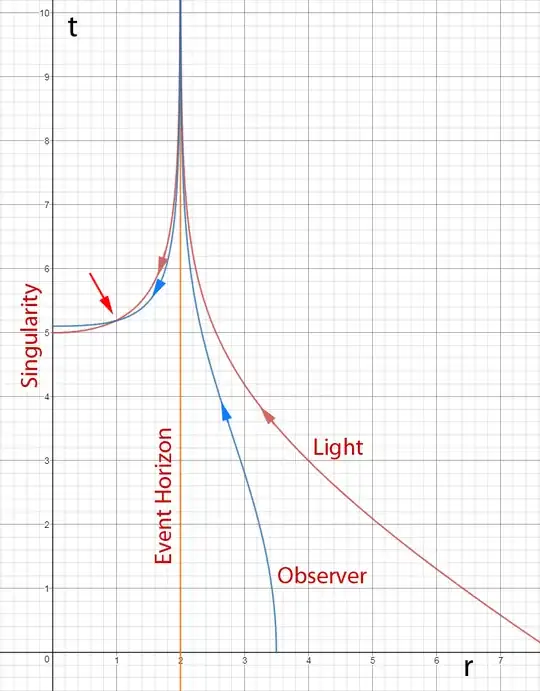If Bob is in free-fall but close to the event horizon, and appears frozen to Alice, who is stationary at a much farther distance, and Alice were to extend a very, very long pool net and try to scoop Bob away, what would be her perception of the end of the net? She would observe her own actions in proper time, and manipulate the net fairly easily (let's assume she's very, very strong, and can keep her end of the pool net in place). But what would she see at the "net" end of the pool net, as she tries to scoop and rescue Bob? Would she see blurred movement, like when your screen freezes and the mouse pointer blurs as you move it?
The second part to this is, can Bob actually be rescued? For instance, would Bob really even be there, or would there merely be an image of Bob (because light would take so long to reach Alice), making rescue impossible. Thanks!
